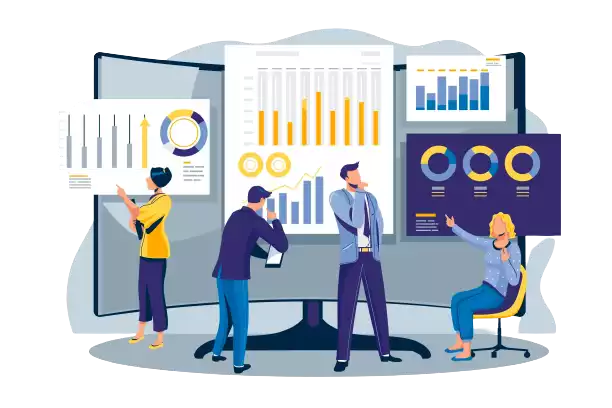Employee Monitoring Software: Myths vs. Facts You Need to Know

employee monitoring software has become a key tool for businesses to improve productivity, manage remote teams, and ensure data security. However, despite its growing popularity, many myths and misconceptions surround it. Some believe it’s all about “spying” on employees, while others fear it invades privacy or damages trust.
The reality is quite different. When used transparently and ethically, employee monitoring software can support both businesses and employees, creating a balanced and productive work environment. Let’s separate myths from facts and understand the real picture.
Myth 1: Employee Monitoring = Spying on Employees
Fact: Employee monitoring software is not about spying—it’s about accountability and productivity.
Many people assume monitoring means secretly watching every move of employees. In reality, reputable tools are designed to track work-related activities, project timelines, and efficiency, not personal data. Companies use them to:
-
Measure productivity fairly.
-
Identify workload imbalances.
-
Ensure compliance with company policies.
When implemented openly, employees are informed and aware of what is being tracked, making it a transparent system rather than a hidden surveillance tool.
Myth 2: Monitoring Software Reduces Employee Trust
Fact: Transparency builds trust, not breaks it.
A common concern is that monitoring will damage the relationship between employees and employers. But in practice, if the company communicates clearly about what is being monitored and why, employees often feel more secure. It shows that performance evaluations are based on real data instead of assumptions or bias.
For example, remote workers benefit because their efforts are recognized even when they’re not physically present in the office. This often builds stronger trust.
Myth 3: It Only Benefits Employers
Fact: Employees gain as much as employers.
At first glance, it seems like only employers profit from monitoring software. But in reality, employees also benefit:
-
Clear recognition of productivity and effort.
-
Reduced chances of micromanagement.
-
Support in maintaining better work-life balance.
When data shows how much work someone has handled, managers can distribute tasks more fairly, reducing burnout. This makes work environments healthier for employees.
Myth 4: Monitoring Software Invades Privacy
Fact: Privacy concerns can be addressed with the right settings.
One of the biggest myths is that monitoring tools capture private details. The fact is, ethical monitoring tools allow companies to customize what they track—such as websites visited, time spent on tasks, or project progress. Personal activities and data do not need to be tracked at all.
Additionally, companies can set up clear guidelines to ensure employee rights and privacy are respected, making it a balanced approach.
Myth 5: It’s Only for Remote Teams
Fact: Monitoring software is useful for all types of workplaces.
While remote and hybrid teams use these tools extensively, office-based companies also benefit. It helps in:
-
Tracking project timelines.
-
Identifying productivity patterns.
-
Improving workflow efficiency.
Whether employees are in-office, hybrid, or fully remote, monitoring helps managers maintain visibility across all work environments.
Myth 6: Monitoring Equals Micromanaging
Fact: It reduces micromanagement, not increases it.
Some fear that monitoring means constant checking and controlling. In reality, monitoring software provides automated reports and performance insights, which actually reduce the need for micromanagement. Managers don’t have to constantly ask, “What’s the status?”—they can already see it in the system.
This frees up time for employees and managers to focus on meaningful work rather than constant check-ins.
Myth 7: It Creates Stress for Employees
Fact: Clarity and fairness lower stress levels.
When implemented incorrectly, monitoring can make employees feel pressured. But when applied with clear communication and purpose, it reduces stress instead of creating it. Employees know exactly what’s expected, how performance is measured, and that hard work will be recognized.
This fair evaluation system motivates employees to perform better while feeling supported.
Myth 8: Monitoring Software Is Complicated and Expensive
Fact: Modern tools are affordable and user-friendly.
Another misconception is that monitoring software is costly or difficult to use. However, many solutions today are budget-friendly, easy to integrate, and provide dashboards that are simple for both employers and employees to understand.
Companies of all sizes—startups, SMEs, and enterprises—use them effectively without large investments.
Conclusion
Employee monitoring software is often misunderstood. While myths paint it as a tool for spying or micromanagement, the facts reveal that it is actually about fairness, productivity, and trust. When introduced transparently, it benefits both employers and employees by ensuring better recognition, workload balance, and accountability.
In the future of smart work management, employee monitoring software will continue to play an important role—not as a tool for control, but as a bridge that connects productivity with employee well-being.




